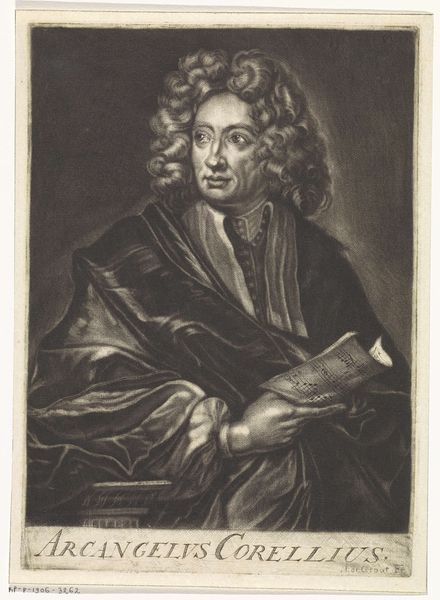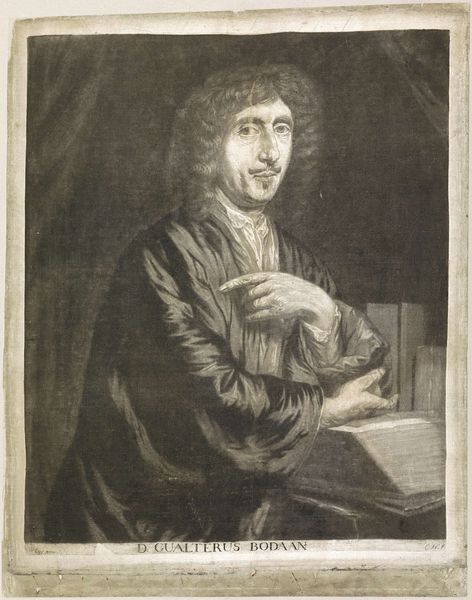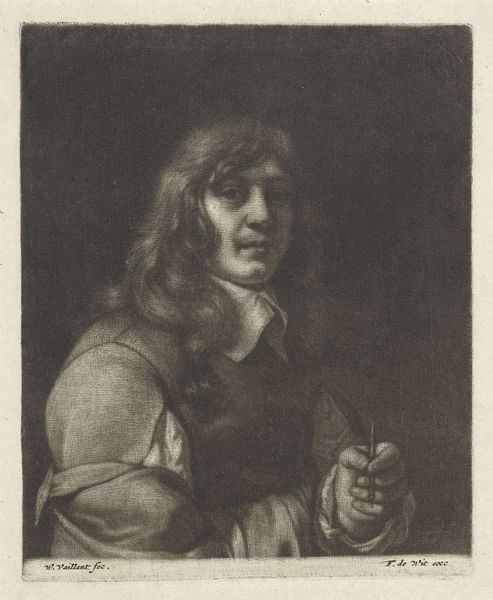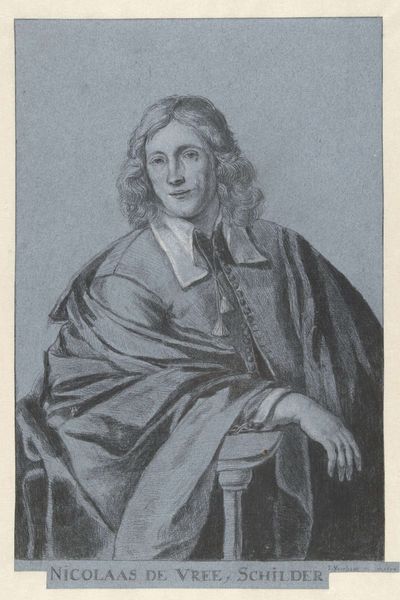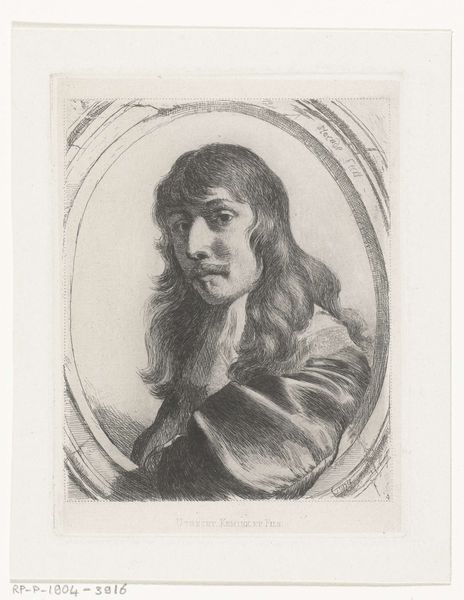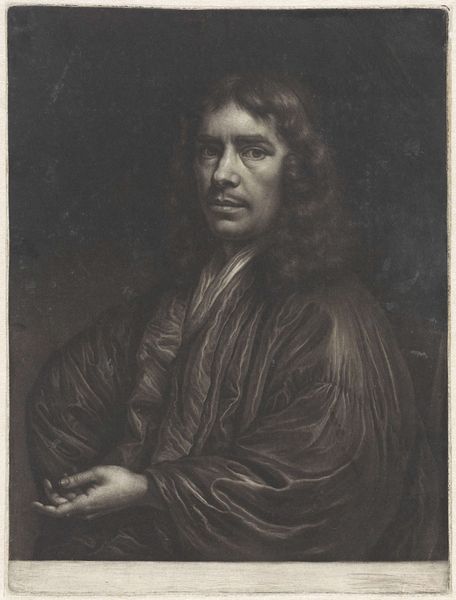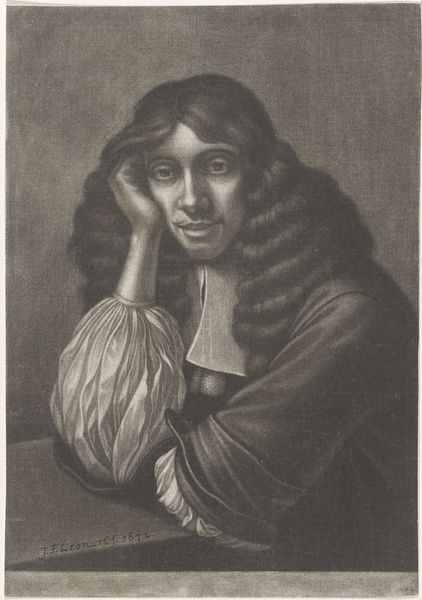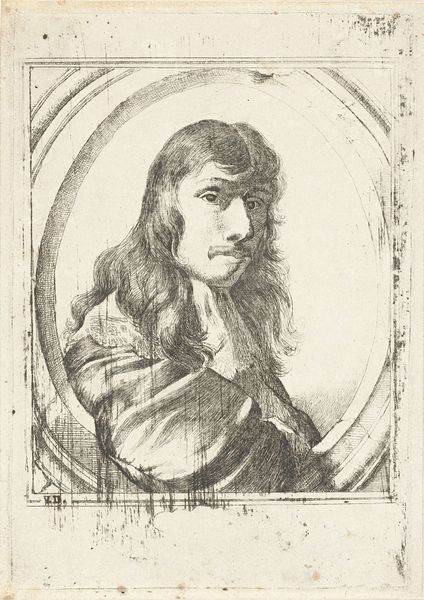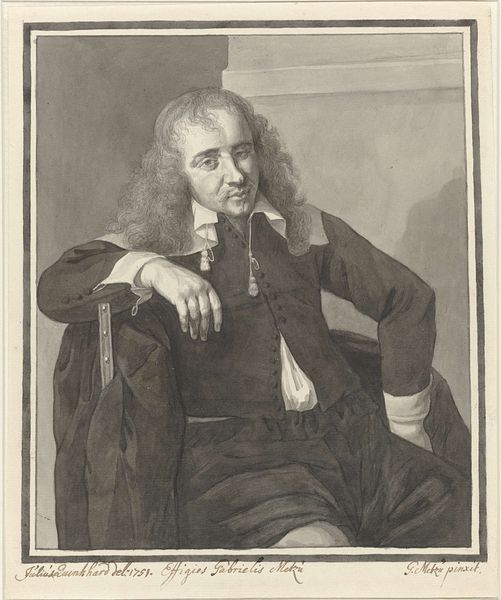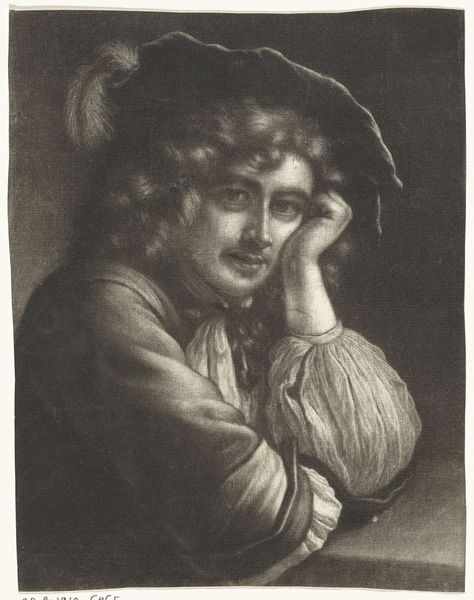
drawing, engraving
#
portrait
#
drawing
#
baroque
#
charcoal drawing
#
engraving
Dimensions: height 218 mm, width 145 mm
Copyright: Rijks Museum: Open Domain
Editor: Here we have a portrait of Jean Baptiste Poquelin de Molière. It’s an engraving, likely from between 1699 and 1776, currently held at the Rijksmuseum. The detail in the face and hair is remarkable. What aspects of this engraving stand out to you, and what historical context might shed light on its significance? Curator: Well, it’s fascinating to consider this image’s function. Engravings like these, especially of prominent figures, were often distributed widely. Think of them as the social media profiles of their time, shaping public perception. How do you think this image of Molière, specifically, plays into the existing narrative, or *brand*, that he cultivated, or that others cultivated *for* him? Editor: I see what you mean. He’s posed thoughtfully, quill in hand, looking very distinguished. It's definitely projecting a particular image. I imagine it’s aiming to cement his legacy as a serious playwright and intellectual, even though he was known for comedy. Do you think the proliferation of these images influenced theatre attendance, or his critical reception? Curator: Absolutely. Consider the social function of portraiture. This engraving provides access, albeit mediated, to a celebrated individual. Moreover, disseminating his image – in reproducible form - allows people outside of the theatre-going elite to know and feel closer to Molière. It creates a visual economy around his celebrity. Were there different versions of Molière circulated during this period, and what do their differences suggest? Editor: That's interesting! I hadn’t thought about the political implications of art extending beyond wealthy patrons. Considering how influential Molière's comedies were, a widely distributed image solidifying his legacy makes total sense. I’ll definitely consider the wider impact of visual representations in the Baroque period now. Curator: And think of the engraving's role in shaping the *idea* of the artist himself! Something to explore, certainly.
Comments
No comments
Be the first to comment and join the conversation on the ultimate creative platform.


